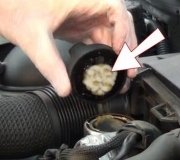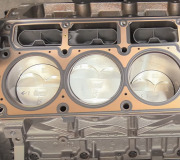Then it would go back in the normal rpm range and accelerate back to seventy mph until it done it again.
As I pulled over, the engine shut off and would not start again, so I was towed.
The temperature got a little over 200 but not in the red.
Checked the oil today and it was milky, and so I drained it.
Also swapped out the TCC solenoid, too.
Is this a head gasket leak?
SPONSORED LINKS
Saturday, August 12th, 2017 AT 12:57 PM




